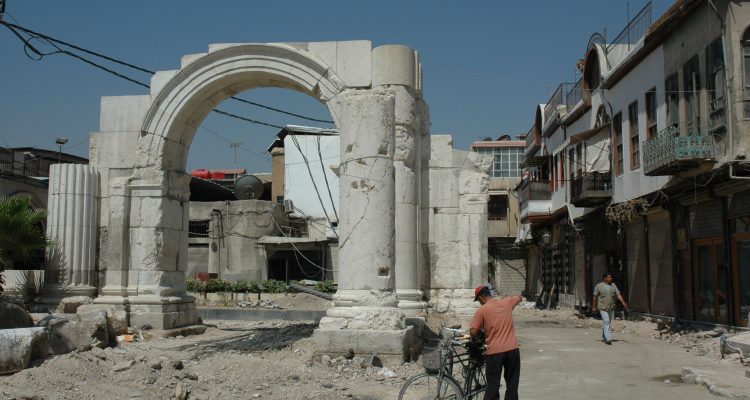On April 13 the United States, France and the United Kingdom launched multiple strikes on Syria. These attacks came around a week after Syria’s armed forces allegedly used chemical weapons on their own citizens in the Syrian city of Douma on April 6.
This wouldn’t be the first time that the Bashar Al-Assad, the current dictator of Syria, has been accused of using chemical weapons on his own people. Assad has been accused and found guilty of using chemical weapons several times. For example, after the 2013 Ghouta chemical attacks, which left over 1,300 people killed, the U.S. released its government assessment in which U.S. intelligence assessed with “high confidence” that the Syrian government carried out a chemical weapons attack. Although condemnation by the international community was quick, they would take little to no action. Former President Barack Obama declared that the usage of chemical weapons was a “red line” and would warrant U.S. military action. However, Obama’s “red line” would be ignored over and over as the Assad regime would continue to use chemical weapons in 2014 and 2015, according to a United Nations report. The U.S.’s lack of action towards Syria changed when President Donald Trump authorized strikes on the Syrian regime in April 2017, days after the rebel-held town of Khan Sheikhoun was allegedly bombed with chemical weapons by the Syrian Armed Forces. About a year after the first U.S. missile strike in Syria, the Assad regime would again be accused of using chemical weapons in the rebel-held suburbs of Douma on April 7, 2018. President Trump would then be quick to take to Twitter and immediately call the bombing a “mindless CHEMICAL attack.” Trump would also put some blame on former President Barack Obama by claiming that: “If President Obama crossed his stated Red Line In The Sand, the Syrian disaster would have ended long ago!” In response to the chemical attacks on April 6, the Trump administration authorized strikes, alongside the armed forces of France and the U.K., on a research center in Damascus and a chemical weapons storage and bunker outside of Homs, Syria on April 13.
Democrats and Republicans have both met Trump’s plan toward Syria with ambivalent feelings. Republican representative Ed Royce, chairman of the House Foreign Affairs Committee, stated that, “Military force cannot be the only means of responding to these atrocities.” Senate minority leader and Democrat, Chuck Schumer, stated that the “limited action” towards Syria was “appropriate” but warned of a larger war with the Syrian government.
But what does this all mean? For starters, it is without a doubt that former President Barack Obama’s failure to uphold his “red line” will forever haunt his foreign policy legacy. Obama took a much more reserved, but diplomatic, approach when dealing with the Assad regime’s chemical attacks. For instance, the U.S., under Obama, worked with Russia and Syria as well as the Organization for the Prohibition of Chemical Weapons and the United Nations to destroy Syria’s stash of chemical weapons. The Obama administration then declared, back in 2014, that the Syrian chemical weapon stockpile was completely destroyed. However, with the recent chemical attacks in 2017 and 2018, that declaration may have been far off the truth. That isn’t to say that President Trump’s aggressive approach has been working – it hasn’t. Assad has proven that the U.S. military strikes on Syria won’t deter him from using chemical weapons on his own citizens as seen with the recent use of chemical weapons on April 6.
So, what now? Well, it seems that Assad is here to stay, and that the real victims are the Syrian people who have been murdered by the Syrian government and, in some cases, by the Syrian rebels. Around half a million people have been killed since the Syrian Civil War began in 2011, and over 12 million people have been displaced from their homes. U.S. military intervention only threatens to destabilize the country even more, especially since Russia has been backing and supporting the Assad regime militarily and logistically. The time for a direct intervention has passed as with Assad controlling the main cities of Damascus, Aleppo and Homs, and the majority of territory in Syria, it seems that he is here to stay. The conflict in Syria has proven and upheld Assad’s image as a vile and murderous tyrant who, at the expense of his people, will continue to hold power. Perhaps President Trump should rethink his aggressive military tactics, and instead focus the U.S.’s efforts on Syrian refugees. After all, his administration has only accepted 11 refugees this year. However, it’s only a thought.


Leave a Reply